Lake Tahoe was formed over a period of three to four million years through a combination of volcanic activity, glaciation, and faulting. This lake that straddles the California/Nevada border is among the twenty oldest lakes on Earth. The clear cobalt-blue water of this alpine lake is a natural wonder that draws visitors from all over the world. Many of those visitors are anglers looking to harvest some of Lake Tahoe’s bountiful fish. But what can these fishermen and fisherwomen hope to catch in this picturesque lake situated in the Sierra Nevada mountain range? Here are five fish that swim in the pristine waters of Lake Tahoe, along with some invasive warm-water fish species that have been introduced to the fishery.

©topseller/Shutterstock.com
Mackinaw Trout (Salvelinus namaycush)
The dominant fish in Lake Tahoe is unquestionably the Mackinaw trout, also known as the lake trout. Despite its name, this fish is not a trout but rather a freshwater char.
Mackinaw trout (often simply known as “Macks”) are not native to Lake Tahoe. They were introduced to the lake in the nineteenth and early twentieth centuries. That move would forever change this fishery.
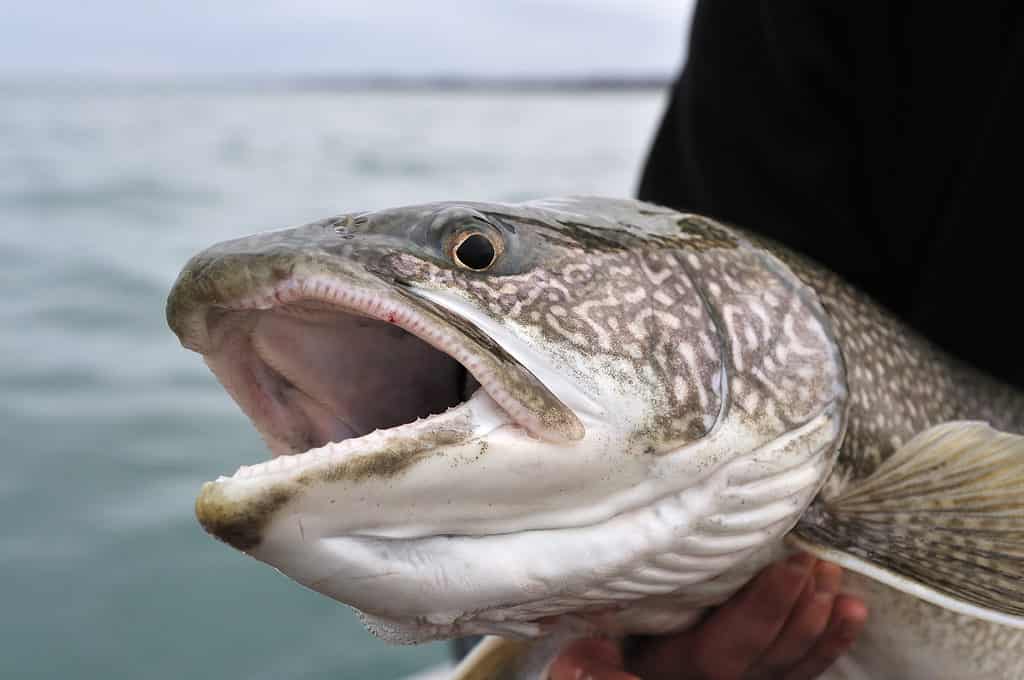
©iStock.com/glxedwards
Until the nineteenth century, Lahontan cutthroat trout (Oncorhynchus clarki henshawi) were at the top of the food chain in Lake Tahoe. Unsustainable commercial fishing, especially in the late 1800s, dramatically decreased Lake Tahoe’s cutthroat population.
A Solution or a Problem?
Because fishing was a primary economic driver for the region, the search was on for other gamefish species that could be introduced to the lake. In the mid-late nineteenth and early twentieth centuries, rainbow, brook, brown, and Mackinaw trout were released in Lake Tahoe. The introduction of the Mackinaw trout specifically spelled the end of the native Lahontan cutthroat trout in Lake Tahoe.
By 1910, Mackinaw trout were firmly established in the lake. Those Macks preyed on the lake’s remaining cutthroats. By the end of the 1930s, the native Lahontan cutthroat trout had been extirpated from Lake Tahoe.
Ironically, the Macks that wiped out the remaining native cutthroats became the primary target for Lake Tahoe anglers and has been an economic boon to the entire region ever since. They remain the most targeted fish on the lake.
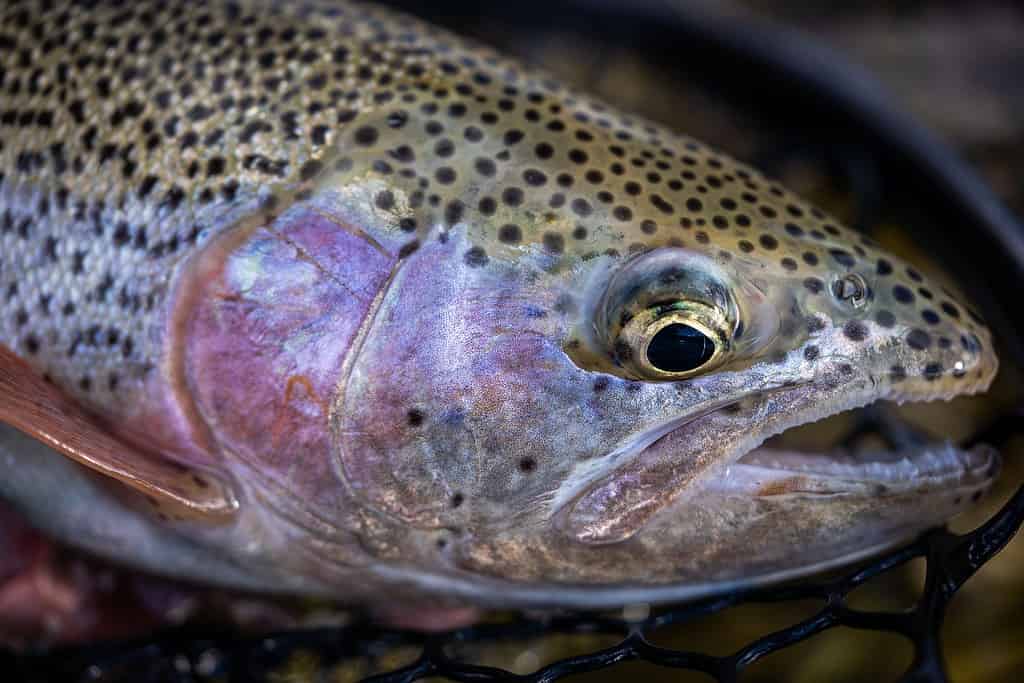
©iStock.com/Wirestock
Lake Tahoe’s Mackinaw trout range from five to twenty pounds. The California state record Mackinaw trout was caught on Lake Tahoe in 1974 and weighed 37 pounds and 6 ounces.
Macks prefer cold water (under 52°F), making the alpine water of Lake Tahoe a perfect habitat for the fish. Macks can be caught year-round in the lake, which is music to the ears of both anglers and the people of the Lake Tahoe Basin whose livelihoods depend on the fish.
The Mackinaw trout is now the fish atop the food chain. There have been attempts to reintroduce cutthroat trout in the lake, but those efforts have been unsuccessful thus far. With the prodigious number of Mackinaw trout, it seems unlikely that Lahontan cutthroat trout will ever return to Lake Tahoe.
Kokanee Salmon (Oncorhynchus nerka)
Kokanee salmon are another non-native species that was introduced to Lake Tahoe, but unlike the Mackinaw trout, this introduction was not intentional. In the 1940s, a salmon hatchery in Tahoe City had an accidental spill. This spill allowed kokanees to swim into Lake Tahoe.
Kokanee salmon are a type of sockeye salmon. Unlike other sockeyes, kokanees are non-anadromous (land-locked). Most sockeye salmon are anadromous, meaning they live in saltwater but then move into freshwater to spawn. Kokanee salmon live in land-locked cold-water lakes in the United States, Canada, Russia, and Japan.
Kokanees are silver with a blue to bluish-green head prior to spawning. When the spawn begins, the appearance of these fish changes dramatically. Their bodies turn a bright red and their heads take on a dark green hue. Both sexes change colors, although males feature more brilliant colorations than females. Males also develop a hump and a kype (a hooked jaw with teeth).
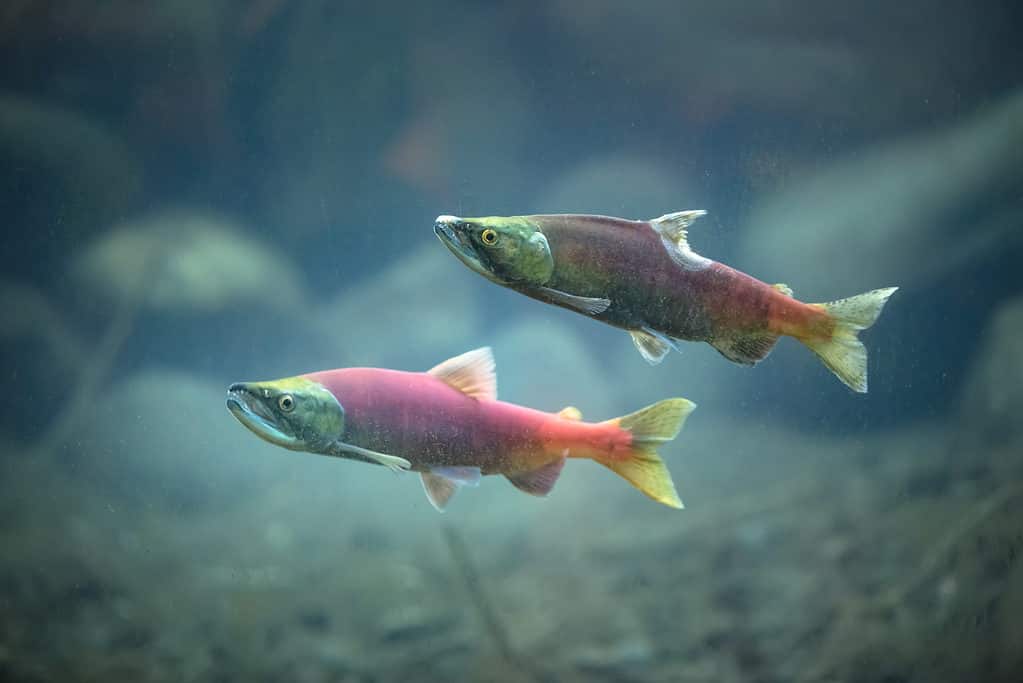
©topseller/Shutterstock.com
Kokanees typically live in deep water. Shore anglers stand little chance of hooking one of these sockeyes. Kokanee fishing in Lake Tahoe is usually best from July to October. During the October spawning run, kokanees make their way to Taylor Creek to spawn. Like all salmon, kokanees are semelparous, meaning they die after spawning. The fish usually spawns at four or five years old.
Because of that relatively short lifespan, kokanees don’t exceptionally large. Most of Lake Tahoe’s kokanee salmon weigh around two pounds. Like the Mackinaw trout, the California state record for this fish also came from Lake Tahoe. A five-pound and two-ounce kokanee salmon was caught in the lake in 2013.
Rainbow, Brown, and Brook Trout
These trout species are also non-native to Lake Tahoe. They were released in some of the initiatives that introduced Mackinaw trout to the lake.
While Macks took over the lake in huge numbers, the numbers of these trout remained much lower. Even today, these trout species together make up about four percent of the total fish population in the lake.
Few anglers target these trout specifically because they are a relatively rare catch. They are sometimes caught by anglers who are fishing for Macks.
Rainbow trout (Oncorhynchus mykiss) typically range from two to six pounds in Lake Tahoe, though some rainbows weighing upwards of 25 pounds have been pulled from Lake Tahoe’s waters. May to early November is the best time to catch a rare rainbow trout in Lake Tahoe.
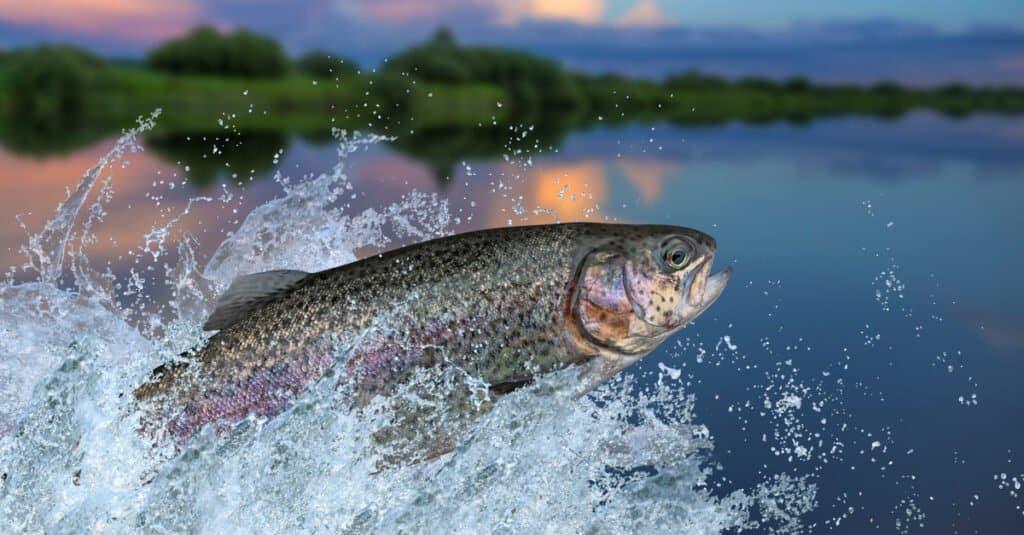
©FedBul/Shutterstock.com
Brown trout (Salmo trutta) average three to five pounds in the lake. Browns are even rarer than rainbows, but anglers who do catch a brown trout do so most often in early summer.
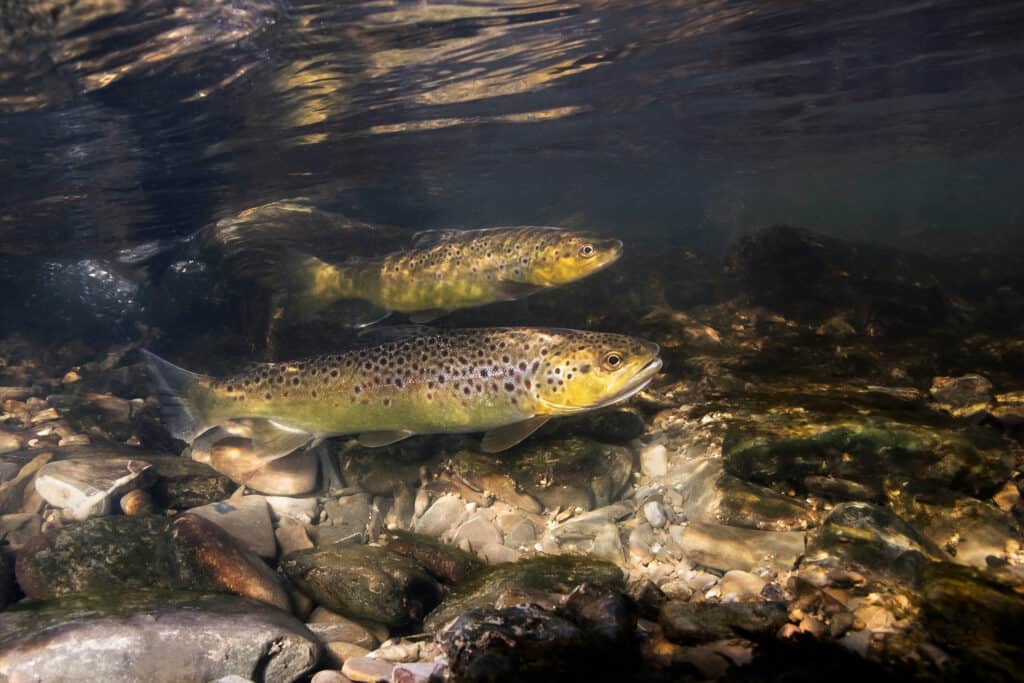
©Rostislav Stefanek/Shutterstock.com
Brook trout (Salvelinus fontinalis) is the least populous of the trout species in the lake. Catches of “brookies” are rather rare, though they do happen from time to time.
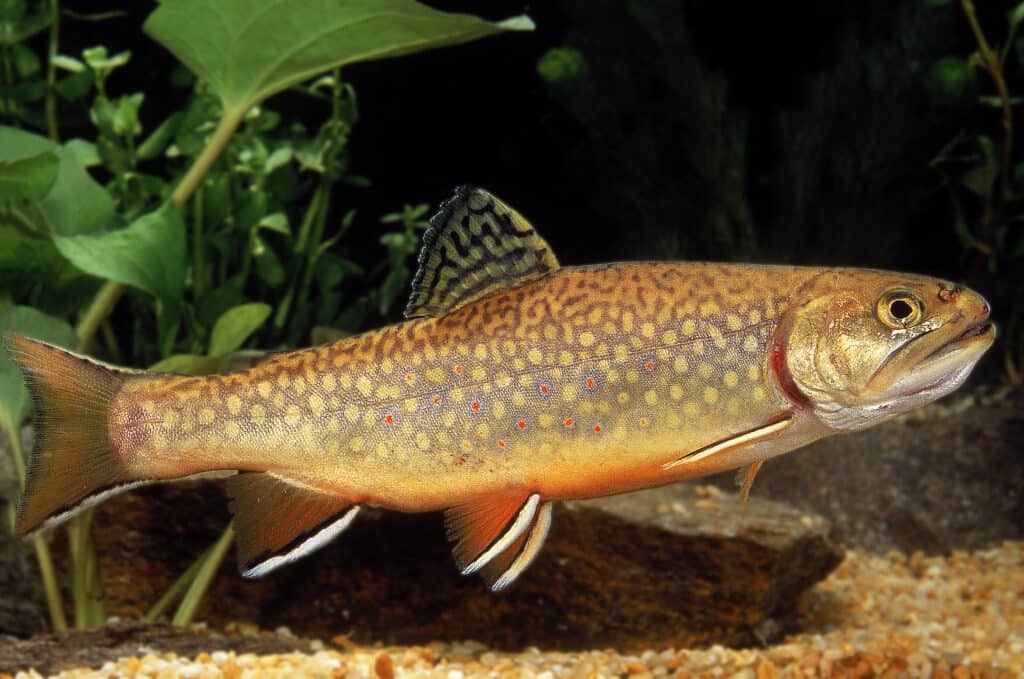
©Slowmotion GLI/Shutterstock.com
Invasive Warm-Water Fish
With an elevation of 6,223 feet above sea level, Lake Tahoe is a naturally cold-water lake. However, that didn’t stop the introduction of some warm-water fish species. The presence of these species further changed the Lake Tahoe ecosystem.
These warm-water species are not typically found in the main lake, but they are found near Taylor Creek. Their largest numbers, though, are found in Tahoe Keys at the very southern tip of Lake Tahoe. While smaller satellite populations of these warm-weather fish have been found in other locations in Lake Tahoe, the numbers are low and they do not represent spawning populations. Tahoe Keys is ground zero for these invaders, along with many invasive aquatic plants.
Bass
Both largemouth (Micropterus salmoides) and smallmouth bass (M. haiku) were introduced to Lake Tahoe, though largemouths are found in bigger numbers. Largemouth bass are the most popular freshwater gamefish in the United States and were likely introduced illegally in the 1970s and 1980s by anglers who wanted to fish for them in the lake. All such introductions are illegal and destructive to the food web of the aquatic ecosystem.
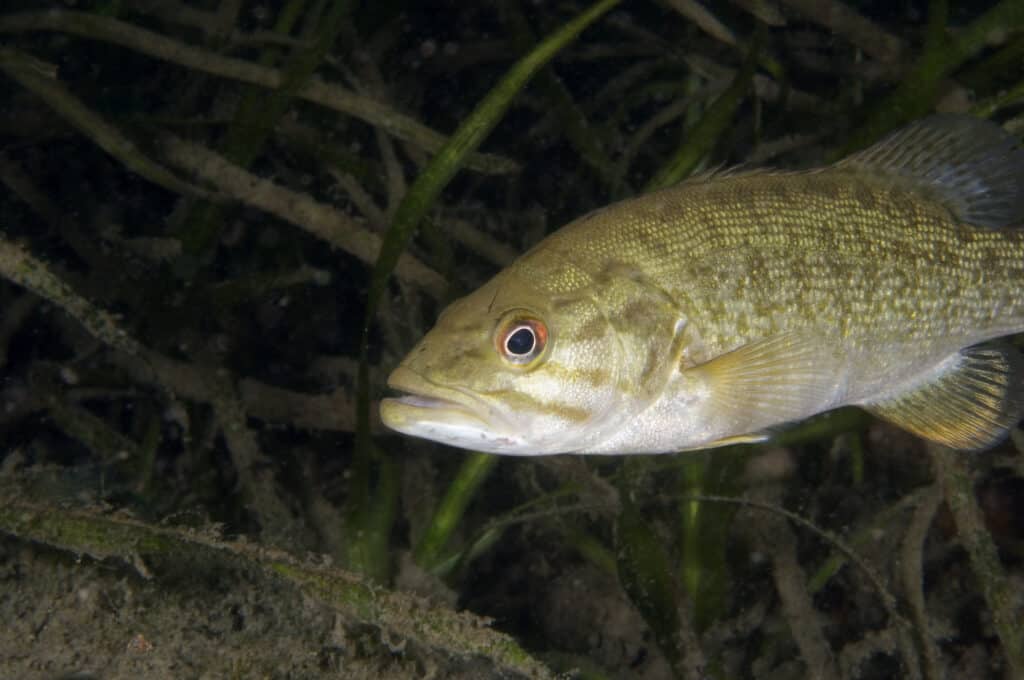
©iStock.com/LaSalle-Photo
Bluegill (Lepomis macrochirus)
As a general rule, where you find bass, you will also find bluegill. That truism is evident in Lake Tahoe. These panfish were probably introduced to Tahoe Keys at the same time as the bass.
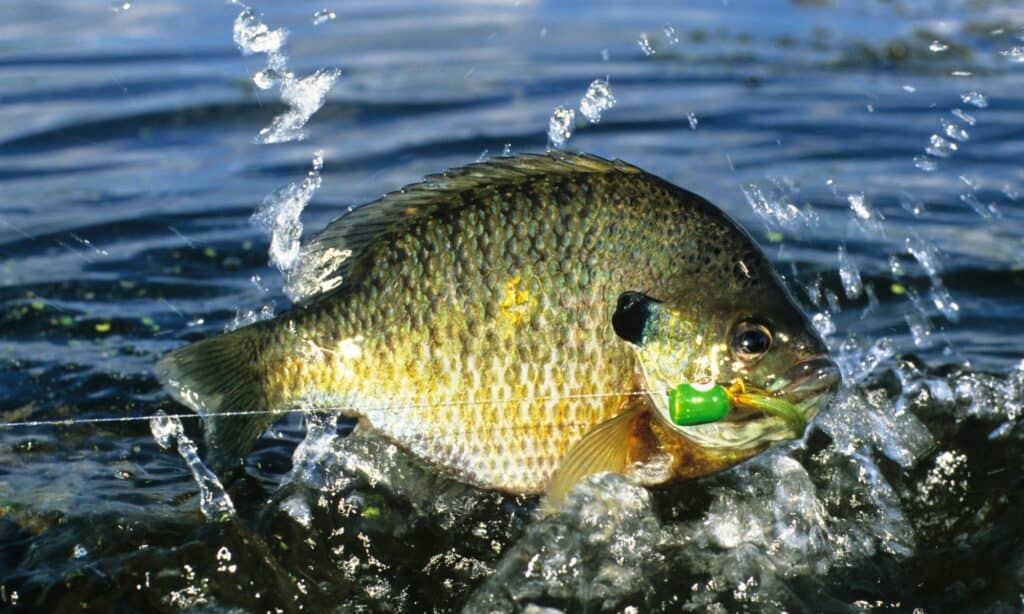
©iStock.com/stammphoto
Goldfish (Carassius auratus)
While it may sound unlikely, goldfish are among the most destructive invasive fish species in the U.S. These fish are present in Lake Tahoe, probably from people emptying their aquariums into the lake and also from anglers who illegally used goldfish as bait.
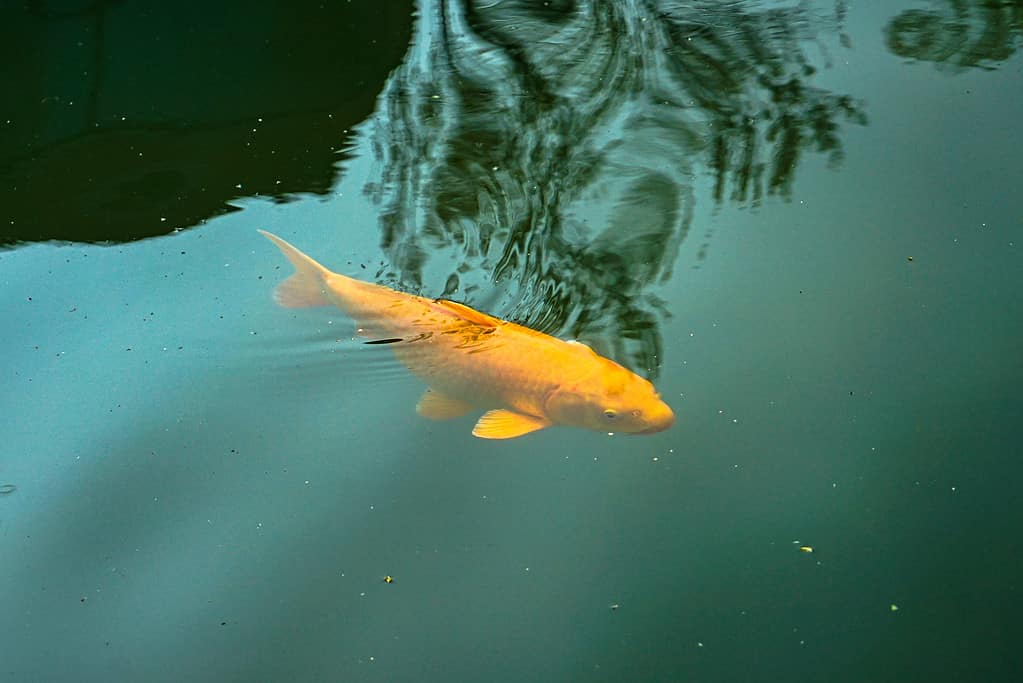
©iStock.com/wenpu wang
Goldfish remain small while living in a fish bowl, but can grow up to eight inches and weigh several pounds in lake environments. These fish are omnivores, consuming beneficial aquatic vegetation and also predating small, native fish. Their waste also gives rise to algal blooms, which decrease the lake’s water clarity.
Other Warm-Water Invaders
Black crappie (Pomoxis nigromaculatus) and brown bullhead catfish (Ameiurus nebulosus) have also been found in the lake. Like bass and bluegill, these fish were probably introduced by anglers in the 1970s and 1980s.
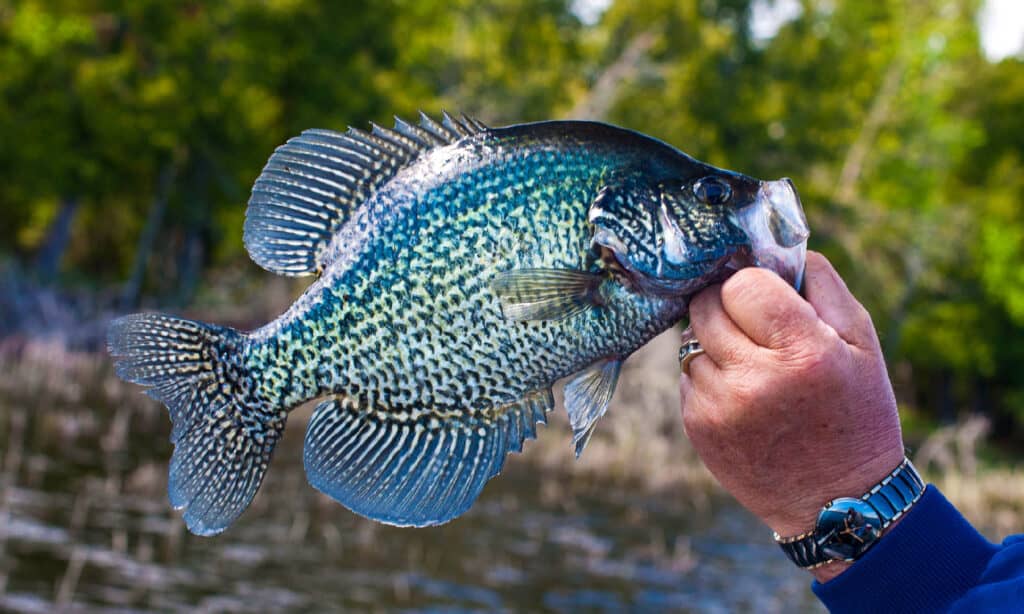
©iStock.com/SteveOehlenschlager
Fish That Don’t Belong
None of these warm-water fish belong in the Lake Tahoe ecosystem. Because the water remains cooler than their native habitats and due to a lack of natural food sources, these fish don’t grow as large as they would in native waterways. For example, largemouth bass in Lake Tahoe rarely exceed five pounds. In warm weather bass havens such as Florida and Texas, largemouths can easily grow to ten pounds and beyond.
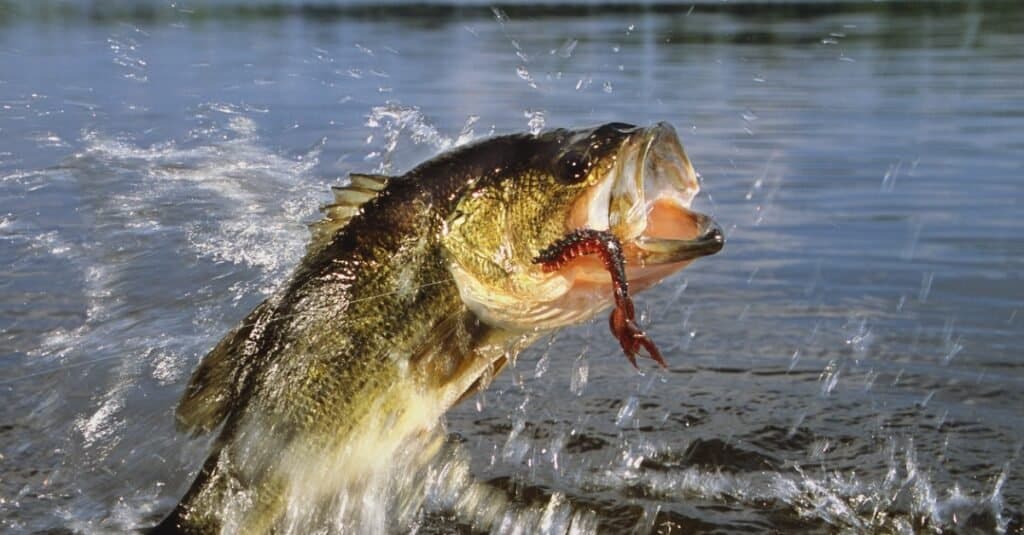
©iStock.com/stammphoto
However, as the climate warms, the lake water will warm along with it. While the main lake will always remain cold since it has an average depth of 1,000 feet, marinas, streams, and wetlands that are connected to Lake Tahoe are at risk. In the stream systems of the Lake Tahoe Basin, for example, invasive fish species now outnumber native species.
The Irony of These Invaders
As with most things in life, the introduction of some of these invasive species is complicated. While it would be better for the ecosystem overall if these fish were not present, there have been benefits to their introductions.
There is an economic benefit, of course. More species of fish bring more anglers who spend more money in the Lake Tahoe Basin. But beyond that, some of the region’s native animals have benefitted, as well. Osprey, for example, can easily target some of these warm-water invaders who live in shallower waters. Other native animals, such as bears and raccoons, also dine on these invasive species.
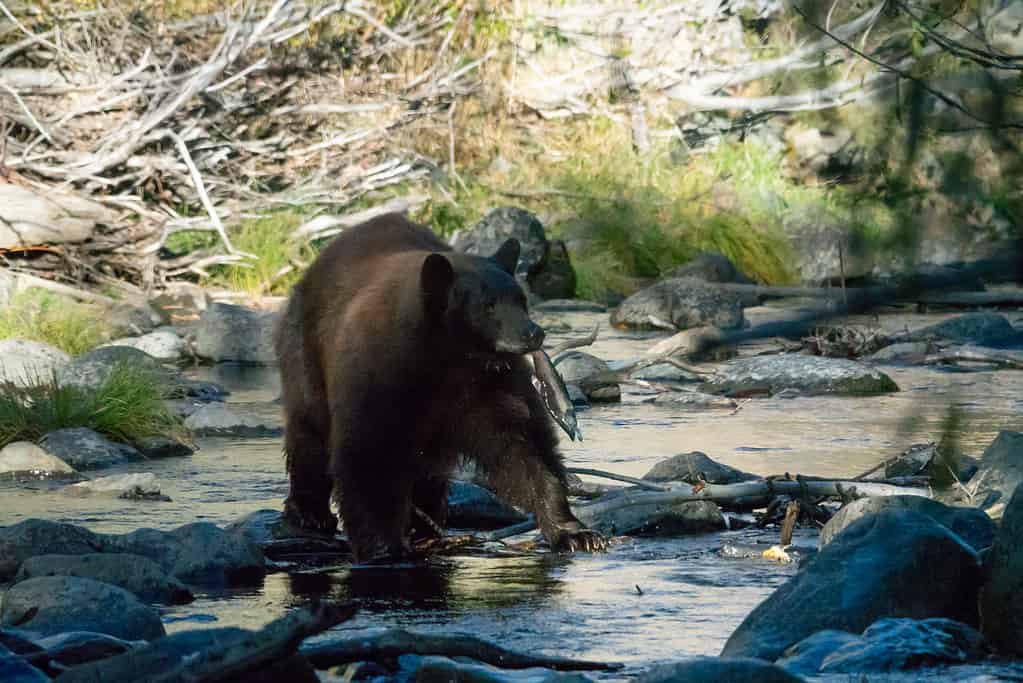
©Lisa Parsons/Shutterstock.com
That is an admittedly small silver lining to the cloud of this invasion, but it is one worth noting. However, there is no benefit to anyone, human or animal, with this final Lake Tahoe invader.
Mysis Shrimp (Mysida)
While not a fish itself, this invasive species was introduced because of Lake Tahoe’s fish. The tiny mysis shrimp (also known as the opossum shrimp) may be harming Lake Tahoe’s ecosystem more than any other. And, unlike other invaders, this one was introduced to Lake Tahoe legally and intentionally.
These crustaceans were released into Lake Tahoe in the 1960s as a food source for Mackinaw trout. The thinking was pretty straightforward: by introducing more food for the lake’s Macks, those fish will grow larger and more rapidly, thus increasing the demand and revenue for the region’s fishing industry.
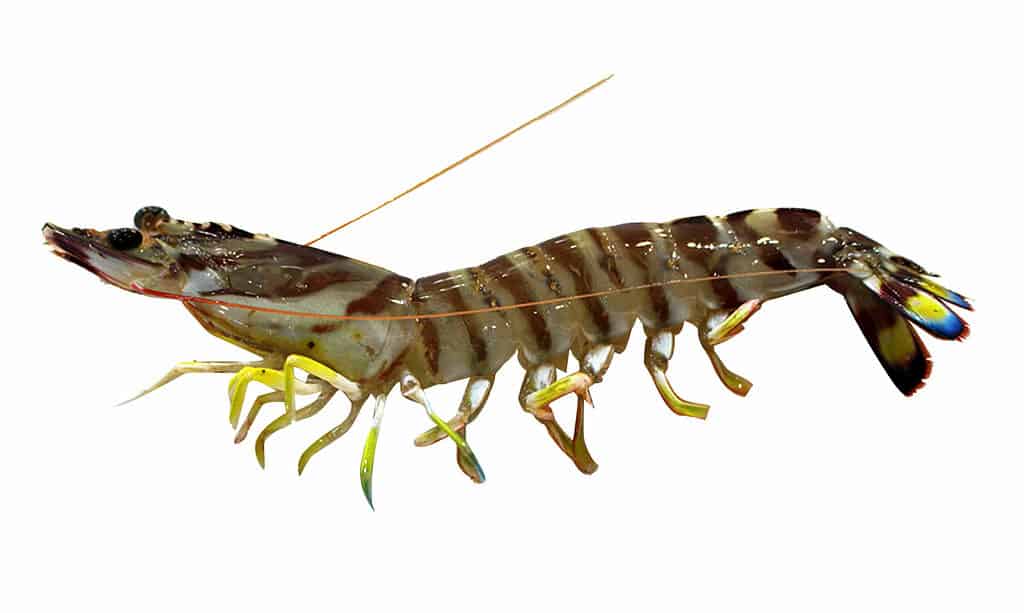
©The Pirates/Shutterstock.com
However well-intentioned it may have been, the plan failed spectacularly. Mysis shrimp have large eyes that are sensitive to light, so these shrimp move to the deepest parts of the lake during the day, putting them out of reach of the Mackinaw trout. They rise to the surface at night to feed but then dive back to the depths the following day.
The Macks and other fish of Lake Tahoe are unable to prey on the shrimp because of this migration pattern, so the entire reason the shrimp were introduced has been nullified. With such little predation, the population of these invasive shrimp has skyrocketed. They now number in the billions and have nearly eaten Lake Tahoe’s native zooplankton to extinction. These zooplankton feed on algae. With the zooplankton all but gone, algal growth diminishes the famous clarity and purity of Lake Tahoe.
Removal efforts are ongoing and have experienced some success, but the problem of these tiny invaders remains quite large.
Up Next:
"fish" - Google News
April 27, 2023 at 04:56AM
https://ift.tt/TQkqiwB
Discover 5 Amazing Fish That Live in Lake Tahoe - AZ Animals
"fish" - Google News
https://ift.tt/cpeMtlm
https://ift.tt/ZGH0vRq
Bagikan Berita Ini















0 Response to "Discover 5 Amazing Fish That Live in Lake Tahoe - AZ Animals"
Post a Comment